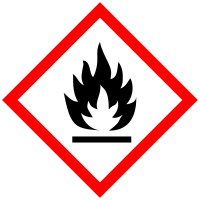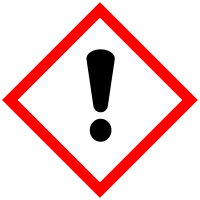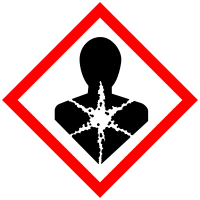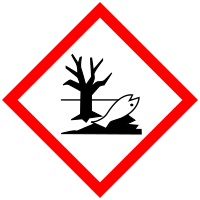
Improving Member States preparedness to face an HNS pollution of the Marine System (HNS-MS)
Isopropylbenzene
Description Top
| CAS number | 98-82-8 |
| UN number | 1918 |
| Chemical formula | C9H12 |
| Standard European Behaviour Classification (SEBC) | Floater that evaporates (FE) |
GESAMP Hazard profile
| A1 | A2 | B1 | B2 | C1 | C2 | C3 | D1 | D2 | D3 | E1 | E2 | E3 |
| 2 | R | 3 | NI | 0 | 0 | 0 | 2 | 1 | NI | FE | 2 |
Marine pollution Classification (MARPOL Annex II)
| Category | Description |
| Other Substances | Substances which have been evaluated and found to fall outside Category X, Y or Z because they are considered to present no harm to marine resources, human health, amenities or other legitimate uses of the sea when discharged into the sea from tank cleaning of deballasting operations. The discharge of bilge or ballast water or other residues or mixtures containing these substances are not subject to any requirements of MARPOL Annex II. |
Alternate names for this chemical
Cumene
2-Phenylpropane
Isopropylbenzene
2-Phenylpropane
Isopropylbenzene
Physico-chemical properties Top
| Chemical formula | C9H12 | ||
| Molar mass | 120.191 [g/mol] | ||
| State | Liquid at 25°C and 1 atm | ||
| Fusion temperature | -96.02 [°C] | ||
| Boiling temperature | 152.41 [°C] | ||
| Critical temperature | 631 [°C] | ||
| Density |
|
||
| Surface tension |
|
||
| Kinematic viscosity |
|
||
| Hydrosolubility |
|
||
| Vapour pressure |
|
||
| Critical pressure | 3209000 [Pa] | ||
| Vapour density | 4.13 | ||
| Flash point (Pensky-Martens closed cup) | 39 [°C] | ||
| Lower explosivity limit (LEL) | 0.9 [%] | ||
| Upper explosivity limit (UEL) | 6.5 [%] | ||
| Vaporization enthalpy |
|
||
| Specific heat capacity | 1753 [J/(Kg·K)] | ||
| Henry's constant | 1165 [mol/(m³·Pa)] |
Behaviour Top
| Log Kow | 3.66 |
| Log Koc | 2.84 |
| Hydrolysis (Half-life) | Not hydrolysable |
| Aqueous photolysis (Half-life) | Not photolysable |
| Biodegradation in estuary environment (Half-life) | Not biodegradable |
| Biodegradation in marine environment (Half-life) | Not biodegradable |
| Standard European Behaviour Classification (SEBC) | Floater that evaporates (FE) |
| Bioconcentration factor (BCF) | 35.5 |
Ecotoxicity Top
| Lowest median lethal concentration (LC50) on crustacean | 7.4 [mg/l] | |
| Lowest median lethal concentration (LC50) on fishes | 2.7 [mg/l] | |
| Highest no observed effect concentration (NOEC) on algae | 0.73 [mg/l] | |
| Highest no observed effect concentration (NOEC) on crustacean | 0.00068 [mg/l] | |
| Highest no observed effect concentration (NOEC) on fishes | 0.0019 [mg/l] | |
| Predicted No Effect Concentration (PNEC) |
|
Hazards Top




Danger
Hazards statements
Physical
H226
Flammable liquid and vapour.
Health
H304
May be fatal if swallowed and enters airways.
H335
May cause respiratory irritation.
Environmental
H411
Toxic to aquatic life with long lasting effects.
Precautionary statements
Prevention
P210
Keep away from heat/sparks/open flames/hot surfaces. No smoking.
P280
Wear protective gloves/protective clothing/eye protection/face protection.
Response
P333
If skin irritation or rash occurs:
P301 + P310
IF SWALLOWED: Immediately call a POISON CENTER or doctor/physician.
GESAMP Top
GESAMP Hazard profile
| A1 | A2 | B1 | B2 | C1 | C2 | C3 | D1 | D2 | D3 | E1 | E2 | E3 |
| 2 | R | 3 | NI | 0 | 0 | 0 | 2 | 1 | NI | FE | 2 |
A1: Bioaccumulation
| Rating | Description |
| 2 | Low potential to bioaccumulate |
A1a:
| Rating | Description | Criteria [mg/l] |
| 3 | Moderate potential to bioaccumulate | 3 ≤ Log Kow < 4 |
A1b:
| Rating | Description | Criteria |
| 2 | Low potential to bioaccumulate | 10 ≤ BCF < 100 |
A2: Biodegradation
| Rating | Description |
| R | Readily biodegradable |
B1: Acute aquatic toxicity
| Rating | Description | Criteria [mg/l] |
| 3 | Moderately toxic | 1 < LC/EC/IC50 ≤ 10 |
B2: Chronic aquatic toxicity
| Rating | Description |
| NI | No Information |
C1: Acute oral toxicity
| Rating | Description | Criteria [mg/Kg] |
| 0 | Negligible | AOTE > 2000 |
C2: Acute dermal toxicity (skin contact)
| Rating | Description | Criteria [mg/Kg] |
| 0 | Negligible | ADTE > 2000 |
C3: Acute inhalation toxicity
| Rating | Description | Criteria [mg/l] (4 hours exposure) |
| 0 | Negligible | AITE > 20 |
D1: Skin irritation or corrosion
| Rating | Description | Sign | GHS category |
| 2 | Irritating | Marked erythema, Obvio | Irritant Category 2 |
D2: Eye irritation
| Rating | Description | Sign | GHS category |
| 1 | Mildly irritating | Mild conjunctival hype | Irritant Category 2B |
D3: Long-term health effects
| Notation | Hazard endpoint | Description | GHS category |
| No Information |
E1: Tainting of seafood
| Rating | Description |
| NI | No Information |
E2: Behaviour of chemicals in the marine environment
| Rating | Description |
| FE | Floater that evaporates |
E3: Interference with the use of coastal amenities
| Rating | Interference | Description | Interpretation | Warning |
| 2 | Moderately objectionable | 1 is a persistent floater; and/or 2 is moderately acutely toxic; and/or 3 is irritating to skin and/or eyes; and/or 4 has long-term health effects other than carcinogenicity, mutagenicity or reprotoxicity; and/or 5 is highly flammable; and/or 6 is moderately flammable and is a floater with evaporative properties | 1 E2 = Fp; and/or 2 C1 and/or C2 and/or C3 = 23; and/or 3 D1 and/or D2 = 2; and/or 4 D3 contains Ss, Sr, T, A, N, or I; and/or 5 Flashpoint <23°C; and/or 6 Flashpoint 23°C to 60°C and E2 = FE or FED | Warning issued and possible closure of amenities |
GHS Security Information




Danger
About the project
HNS-MS is a decision-support tool that Belgian and French maritime authorities as well as coastguard stations can activate in order to forecast the drift, fate and behavior of acute marine pollution by Harmful Noxious Substances (HNS) accidentally released in the marine system.
Contact us
Copyright © 2015–2025 HNS-MS Consortium
 HNS-MS has been funded by DG-ECHO under agreement ECHO/SUB/2014/693705 and runs from 1 January 2015 to 31 March 2017.
HNS-MS has been funded by DG-ECHO under agreement ECHO/SUB/2014/693705 and runs from 1 January 2015 to 31 March 2017.